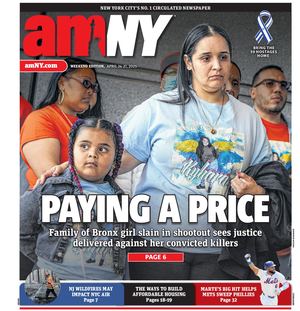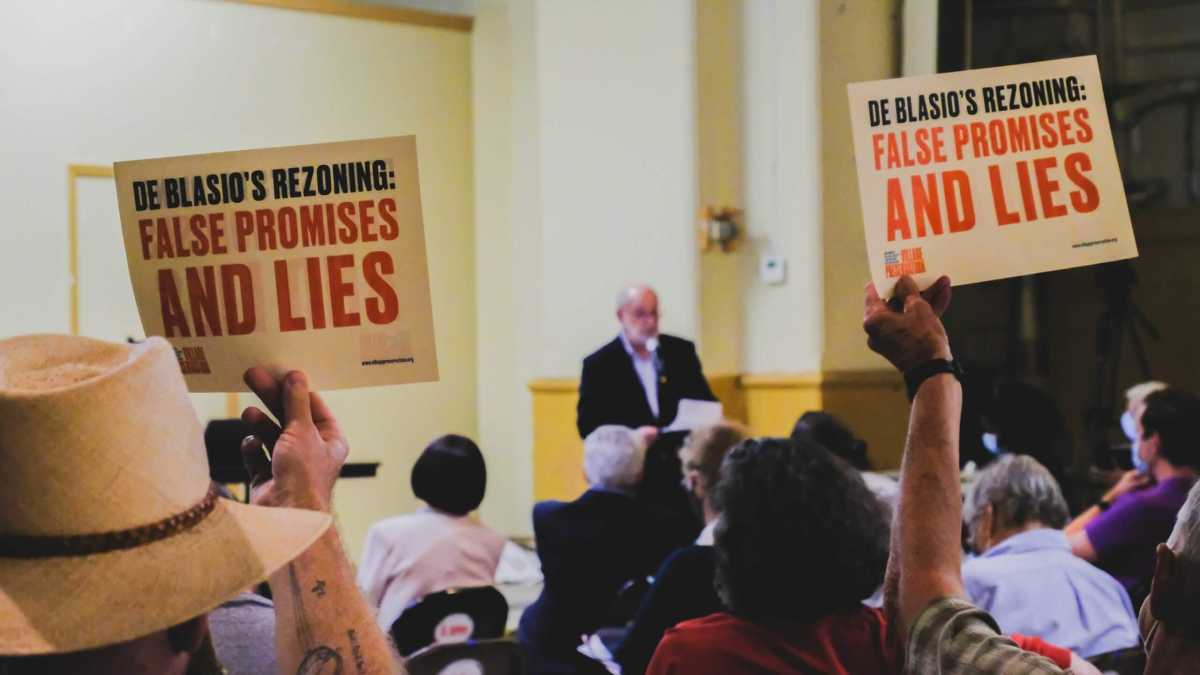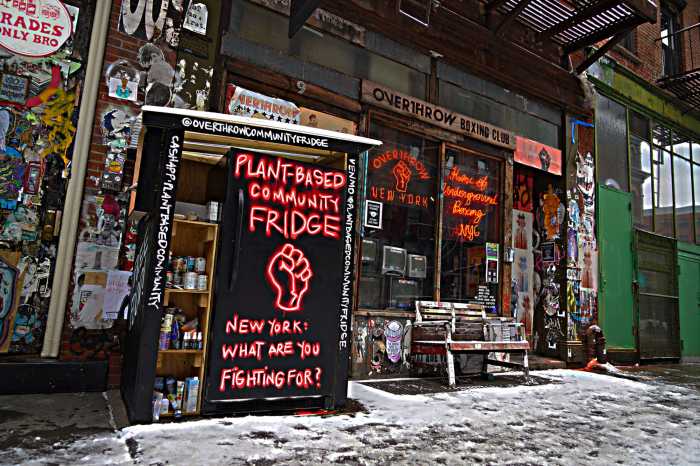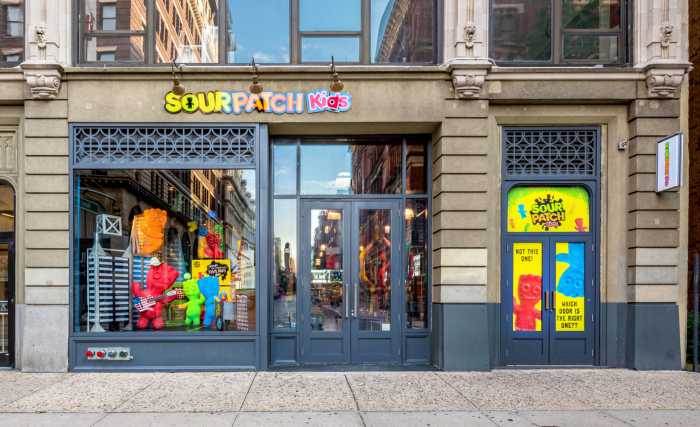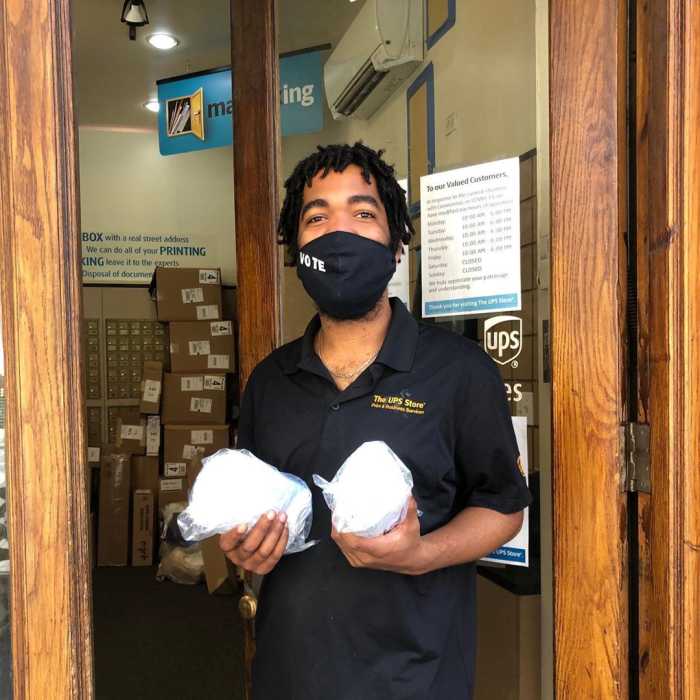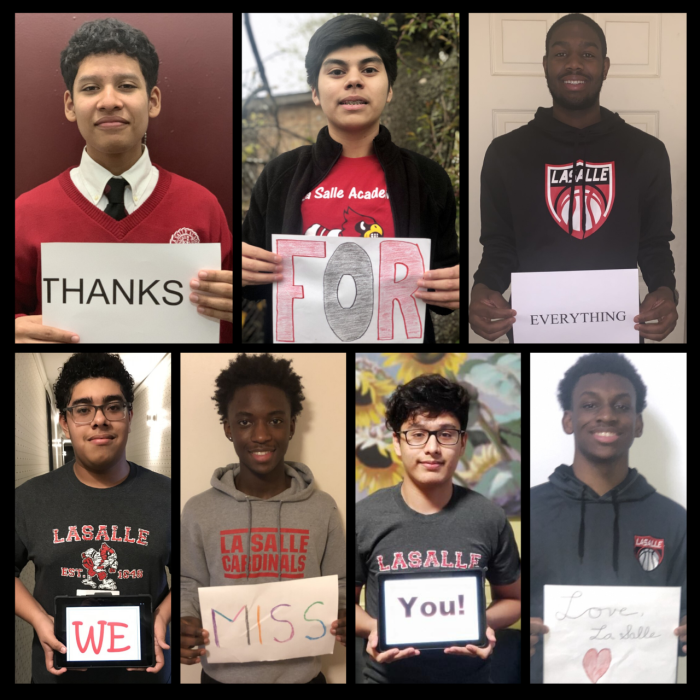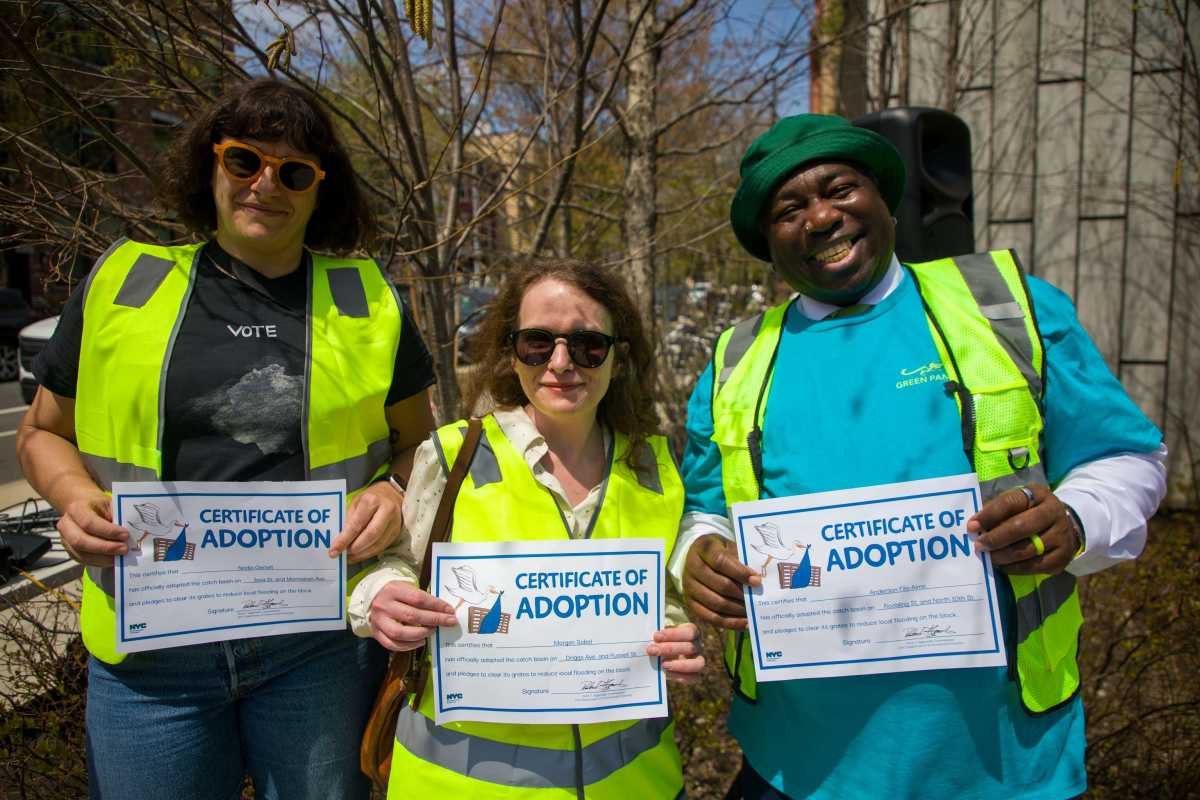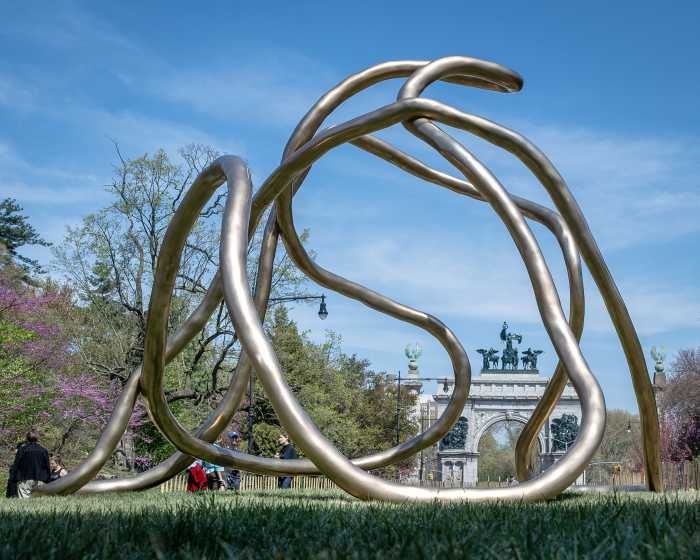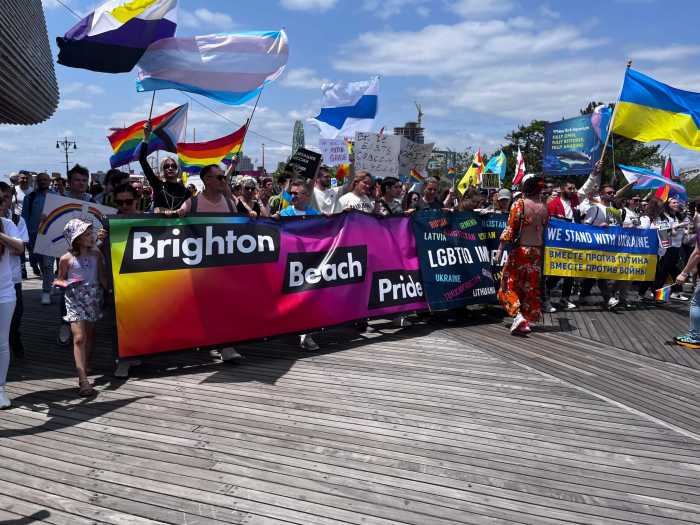Manhattan Community Board 2 members felt the pressure to vote against rezoning SoHo and NoHo during the final meeting on the proposal within the dimly lit basement of St. Anthony of Padua Church on Monday.
After nearly a year of heated exchanges at public meetings and in the press, the advisory body ultimately recommended denial of the proposal that would allow developers to build higher than ever in the already wealthy downtown enclave – an objective to prompt more affordable housing in the city.
“The proposed SoHo, NoHo rezoning fails to achieve affordable housing goals and instead incentivizes office, dormitory and large retail development and will displace existing rent-protected and low-income residents,” the 11-page resolution stated, among other things. “Zoning changes will squeeze out small retail stores and negatively impact quality of life for current and future residents.”
The resolution passed by a nearly unanimous vote.
As the community board meeting came underway, Mayor Bill de Blasio appeared on Inside City Hall and defended his administration’s plan by claiming “rancorous” disagreement on the topic was simply in the nature of New Yorkers.
“I think that’s just another day in New York City. There’s been a lot of passion on both sides. But the most powerful point here is, we’ve got to build affordable housing in the more privileged neighborhoods too,” de Blasio said. “This is almost 1,000 units, 1,000 apartments in SoHo, a place that most working people could never dream of living. I think that’s great. And we’re going to be able to do a lot more to help small businesses to help the retail sector that’s hurting, that needs opportunity in that area as well… The fact is, a lot of elected officials have said they agree with this. It’s time to do re-zonings like this in privileged neighborhoods too.”
The proceedings for the July meeting were less intense than that in June which saw attendees shouting and chanting out of turn while city officials were forced to simply continue on with their presentation regardless of whether or not they were heard.
Now, as the recommendation from CB2 to not proceed with the rezoning, the City Planning Commission could hold its only hearing on the matter as early as Sept. 1, according to Village Preservation Executive Director Andrew Berman, though there is another scheduled meeting on Sept. 22 or later in the year.
A DCP spokesperson, however, told amNewYork Metro that this particular hearing has not been scheduled but will be posted here.
‘Our city will lose everything’
Nonetheless, Monday’s board meeting featured plenty of friction and fireworks.
One of the first speakers who identified himself only as Spencer said he supports the rezoning, but was shouted down by others who called him a “shill.” His response was to challenge any of them to “talk to him outside” for infringing on his two minutes.
In contrast, speakers who were opposed to the plan were interrupted only by applause.
Former City Council Member Alan Gerson spoke on behalf of Sierra Club NYC, explaining that the construction and density that would be spurred would not only generate health problems, but could supposedly leave historic landmarks vulnerable.
“I take this personally, but make no mistake, this proposed upzoning along with that of the South Street Seaport Historic District is a frontal attack on all historic districts,” Gerson said. “If we don’t hold the line here, our city will lose everything that we value and the very reason for historic districts in the first place.”
City Hall’s proposal seeks to change course from M1-5B zoning currently designed to allow for manufacturing and joint living/workspace for artists in sections defined by Canal Street to the south, Houston Street and Astor Place to the north, Lafayette Street and the Bowery to the east, and Sixth Avenue and West Broadway to the west.
But by the Department of City Planning’s numbers, no less than 19% of these housing units will fall within the scope of the city’s inclusionary housing mandates, between about 621 to 940, to fall within the price range of low income New Yorkers, as released in a draft of the plan in October 2020.
A number of concerns persist.
Community members voiced suspicion toward the mandatory inclusionary housing laws based on the existence of units that fall under that category requiring a much higher income than most would consider low income, as well as the notion that developers may choose to build office buildings, NYU annexes or big box stores with additional wiggle room they get under the rezoning.
Most speakers at the Monday meeting said they invested in the community when it was a crime-ridden, urban wasteland and claim they do not deserve to be called racist by those in favor of the plan.
Todd Fine, president of the Washington Street Advocacy Group and an historian, believes opponents can brush off the critics as SoHo attracts many to the area regardless of the neighborhood’s demographics.
“Thousands of people on Twitter will call you racist and the KKK, but there are millions – hundreds of millions of people – around the world who have come here to admire what we’ve built,” Fine said.
Skepticism from the board
As debate over the resolution continued following the hearing, second vice-chair on the board Valerie De La Rosa attempted to reconcile the two sides of the debate by pointing out that the opponents to the plan are not challenging affordable housing, but that they were skeptical of housing being created at all.
Treasurer Antony Wong put it in simple terms: the city cannot “hold a gun” to developers heads if their ambitions are not to build housing.
Some members of the board vexed over a supposed lack of input from Chinatown residents who may face language barriers in voicing their own opinion.
Jeannine Kiely, CB2’s chair, said it herself during the June meeting that the city had not given adequate time to review the 16,000-page proposal.
